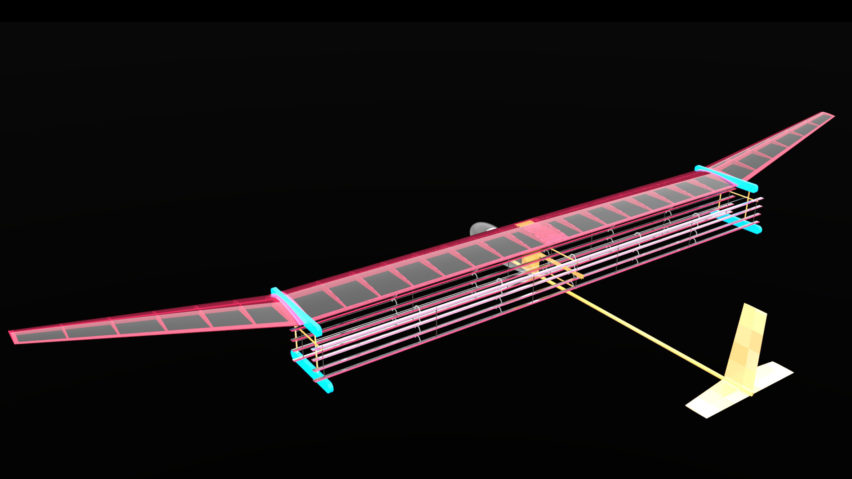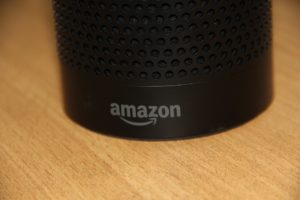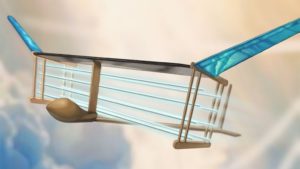Current planes have a lot of problems. Fuel efficiency and how loud they are, being the main ones. How can one solve both problems at the same time? No moving parts is the answer and that’s exactly what MIT researchers have just done.
The plane their build weighs about 2,5 kg and has a wingspan of about 5 meters. The first sustained flight was achieved after 9 years since the first research. It has zero moving parts and somehow manages to maintain a stable flight. It has flown 60 meters (full length of a school gym they tested the prototype in) multiple times. The plane is built of wings, main body with batteries in it, power supply that converts batteries’ output into high voltage, and thin and thick wires parallel to the wings and beneath them. It looks like this:
And this is how it looks mid-flight:
How does the propulsion work? The plane uses very high voltage (40,000 volts) to generate ions out of the air. Electromagnetic field is created by the flow of electrons inside the wires. This field moves ions from positive to negative electrode. Moving ions push air molecules in the same direction they are travelling and make thrust, that propels the plane. It is called ionic wind. Here is some visualisation:
A researcher at Oxford Thermofluids Institute says “Although it is still a long way off from commercial gas turbine propulsion … electroaerodynamic propulsion has the potential to be a game-changer for short-range, small-payload drone flights”. The researchers of the project aren’t convinced this technology can be used in commercial aviation, but say that it can be used in modern planes to reduce fuel usage by reducing the drag created by the air travelling along the aircraft and make planes quieter. They also said that they want to optimise current prototype. It is a big and one of the fist steps in this area of aviation, and surely not the last one. If the technology can be optimised in order to produce more thrust with less voltage, it has a real potential to replace jet engines.
The project has two downsides that are rarely mentioned. The first one is that it leaves an ozone trail. It is a gas made out of three molecules of oxygen. You probably know its smell, because it is present during and after lightning storms. Ozone is good in the higher levels of our atmosphere (stops UV light), but near the ground level it can harm whole respiratory system, causing premature death or asthma. The other downside is its efficiency. It is very, very insefficient compared to all means of transportation used today.
I also highly recommend watching a video made by Nature you can find below.
Fun fact: The main researcher, Steven Barrett, was inspired by television series “Star Trek”. He said:“This made me think, in the long-term future, planes shouldn’t have propellers and turbines,” Barrett says. “They should be more like the shuttles in ‘Star Trek,’ that have just a blue glow and silently glide.”
What do you think?
Sources:
https://www.technologyreview.com/s/612451/an-electric-plane-with-no-moving-parts-has-made-its-first-flight/
http://news.mit.edu/2018/first-ionic-wind-plane-no-moving-parts-1121
https://en.wikipedia.org/wiki/Ozone
also the video linked above






